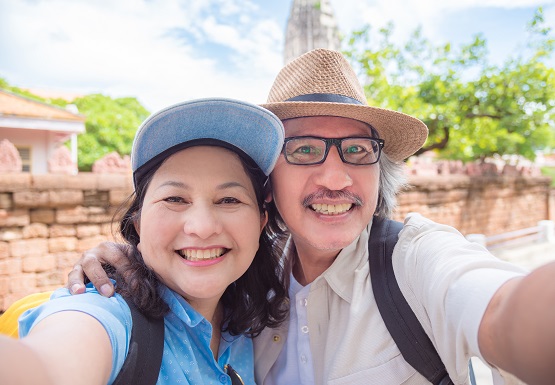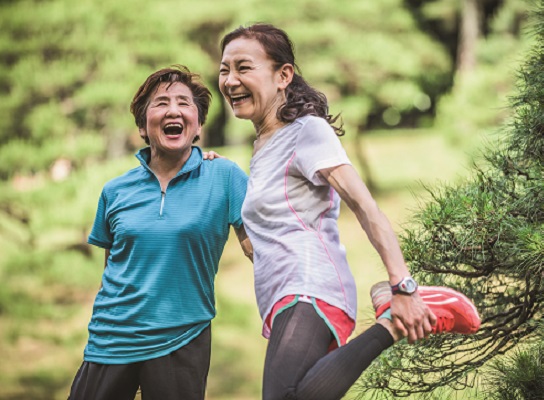All About Orthogeriatrics

Age brings mixed blessings. Among the welcome gains are the wisdom of life experience and more time to spend on hobbies and with grandchildren. On the other hand, it brings a heightened risk of broken bones and joint problems. Dr Hitendra K Doshi, Orthopaedic Surgeon and Founder of HK Doshi Orthopaedic Center, explains how orthogeriatrics is helping older people retain and regain their mobility.
WHAT IS ORTHOGERIATRICS?
Orthogeriatrics simply means managing orthopaedic concerns in the elderly or geriatric population. It involves a diagnostic, holistic and preventive concept in managing bone- and joint-related pathologies among those in their 50s and beyond, through a multi-disciplinary team approach.
COMMON CONDITIONS
The two most common conditions affecting the elderly are degenerative joint disease, commonly known as osteoarthritis, and fragility fractures.
Osteoarthritis is generally attributed to chronic ‘wear and tear’, which manifests over time. Symptoms include pain when bearing weight, swelling, and a restricted range of motion, particularly in the knees and hips. Although these degenerative changes may start earlier in life, symptoms become more apparent as the condition deteriorates. In some cases, symptoms may surface in the early 30s or 40s.
Fragility fractures are linked to the common age-related conditions of osteoporosis, low calcium and low Vitamin D blood levels. These factors cause bones to become brittle and thus more susceptible to crack, break or even shatter when they are stressed, say from a sudden muscle pull or a minor fall that would normally pose little risk of injury.
OSTEOARTHRITIS: MANAGEMENT AND PREVENTION
Dr Doshi explained that the management of osteoarthritis depends on the stage of the disease and the severity of the symptoms. Though treatment often culminates in knee replacement surgery, there are other effective forms of management in the early stages.
“Weight reduction, lifestyle and activity modification, physiotherapy, medications, viscosupplementation injections and the use of an off-loader brace are all effective non-surgical forms of management,” said Dr Doshi. “If diagnosed early, these measures can retard the rate of deterioration of the degeneration,” said Dr Doshi.
MANAGEMENT AND PREVENTION
Common fragility fractures in the elderly frequently involve the hip, wrist and spine. Although most fractures require surgical repair, complex fractures that involve the joint may require joint replacement surgery.
Dr Doshi shared that while upper limb fractures may require only conservative treatment in some cases, lower limb fractures are almost always managed surgically. The goal is to restore early mobility and avoid the complications of being bed-bound such as bed sores, urinary tract infection and chest infection, to name a few.
Complications from lower limb fractures can contribute to significant morbidity and even mortality, cautioned Dr Doshi. Many who succumb to fragility fractures are osteoporotic, meaning they have brittle bones, and have not been diagnosed prior to their fall.
“Education on fall prevention together with early diagnosis and treatment of osteoporosis remains the cornerstone in reducing the incidence of fragility fractures,” shared Dr Doshi.
FRAGILITY FRACTURE SURGERY VS. KNEE REPLACEMENT SURGERY
Since surgery for fragility fractures is usually in an emergency setting, it is often associated with a higher risk of potential complications than, say, a planned elective knee replacement surgery. The risks increase even more when there is a delay in surgery, which in turn may prolong the rehabilitation process.
“The key to good outcomes after surgery in managing fragility fractures, especially fractures of the hip, is early and timely surgery and mobilisation,” advised Dr Doshi.
In contrast to patients who require emergency surgery for fragility fractures, patients who undergo elective knee surgery are assessed and optimised well in advance, which helps minimise potential complications.
“I routinely advise patients to do targeted muscle strengthening pre-surgery. In my experience, this ensures a smoother rehabilitation and recovery post-operation,” said Dr Doshi.
AGEING GRACEFULLY
From the bone and joint perspective, ageing gracefully means ensuring mobility and painless joint function through the silver and golden years ahead.
“This contributes significantly to mental and emotional wellbeing, an important element in ensuring happiness,” said Dr Doshi.
“Hence, my mantra for graceful ageing is early diagnosis, holistic management and practising preventive measures.”
May we all enjoy the privilege of ageing gracefully. And should we need it, it’s good to know that Dr Doshi and his colleagues in orthogeriatrics are there to cushion our falls and get us back on our feet.
This article is taken from our My Alvernia Magazine Issue #45. Click here to read the issue on our website.



